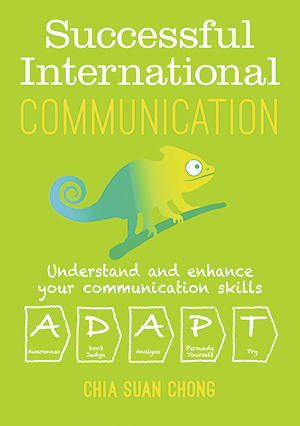Ten tips for listening to our students

Teaching, as a profession, tends to attract extroverts and those with the confidence to stand in front of a class and be heard. It is therefore no surprise that many EFL teachers I have met are ex-actors, musicians, and performers. Couple that with our traditional view of teachers: the one that imparts their knowledge to the class by lecturing and talking, and there’s a danger of ending up with a lot of teacher-talking time and very little student talking time.
No matter how entertaining that teacher talking time may be, a class with more than 50% teacher talking time is simply robbing students of precious time for language practice. While some might argue that listening to the teacher speaking in English is listening practice in itself, the same could be said of listening to YouTube videos, TED Talks or the actors in a Hollywood movie.
The USP (Unique Selling Point) of a language classroom (as opposed to trying to learn just by exposure to the language e.g. by watching videoclips and movies) is the fact that students are able to use the language and interact with it, a vital component of language learning. The time and/or money invested in coming to a language class should mean that teachers should seriously consider how they might create the right conditions for such interaction and language use to take place, rather than overly focusing on what they might say or the presentations they might give in class.
A teacher who is a good listener is able to get students speaking, not only to practise the target grammar or vocabulary, but to express themselves and talk about something that is meaningful to them. This may be them sharing an experience, giving their opinions on an issue, or negotiating a way forward with a classmate, but this motivation to communicate meaning is what makes the use of language consequential.
Many students might find speaking in a foreign language intimidating and even scary. Their lack of ability to express themselves can result in frustration and low levels of confidence. But having a teacher who is truly listening, not just as teacher and student, but as two human beings relating to one another, can help the student focus less on the obstacles to communication, and more on the connections they are making with the teacher and the other people in the classroom.
Here are ten tips on how you can be a better listener for your students:
1. Carefully listen to what they are telling you
This might seem obvious but really isn’t. We sometimes can get so caught up in listening out for lexico-grammar and pronunciation issues in our students’ speech that we forget to truly listen to what it is they are saying, as demonstrated in this hilarious but awkward video. Whether they are talking about their breakfast or revealing their thoughts about the current political situation in their country, don’t just act like you are listening; really listen to what they are really saying.

2. Stop thinking about yourself
When we are supposedly listening, so many of us spend our time actually thinking about our opinions on what is being said, the stories that we are reminded of, and how we are going to respond. Instead, we should put ourselves aside for a moment and truly listen. If you catch yourself drifting, remember these words of Bob Dignen of York Associates, ‘Allow yourself to stay in their world for a little longer.’
3. Listen to paralinguistic and non-linguistic communication
When faced with a lack of the right grammar or vocabulary to convey our thoughts and feelings, we sometimes make more use of paralinguistic features like intonation or volume, and nonlinguistic features like body language and facial expressions, to get our meaning across. Don’t just listen to the words; listen also to what is not being said. (However, be aware that para- and non-linguistic communication can differ from culture to culture.)
Our learners’ communicative competence lies not just with their words but with the full spectrum of their communicative abilities.
4. Show that you are listening
Use eye contact, gestures like a smile or the nod of the head, and an interested facial expression to communicate the fact that you are listening. In Nancy Kline’s Time to Think, she writes about the importance of showing the listener that you are not going to interrupt and that you are happy for them to have the time to formulate their thoughts in your presence.
When the formulation of utterances are made more difficult by a foreign language, it is all the more important that our students know that we are not about to hurry them along if they need to that extra bit of time to express themselves.
5. Ask questions about what they are saying
Questions are a great way to show that you are listening, to better understand what has been said and to get the student to speak more. Ask questions about the topics mentioned, ask questions to clarify, and ask questions to get the student to expand on certain interesting areas.

6. Be comfortable with silence
Silence in an interaction can happen for different reasons. Sometimes, it’s because the student is reflecting on what is being said. Sometimes, it’s because student is searching for a way to express themselves. Sometimes, it’s because they come from a culture where turn-taking is done at a slower pace and the listener is given time to think about what has been said.
Avoid panicking and rushing in to fill every second of silence. We are not on the radio; silence can be a good thing.
7. Help them to express themselves
It’s important to let students hum and haw and work hard at trying to express themselves. This thinking process is an active part of language acquisition taking place and students often appreciate the space to figure things out for themselves (see point 6 above).
However, if we listen carefully, we should be able to hear when a deeper frustration is setting in, and because we have been listening active, we should also know the words they’re searching for. Jump in when appropriate to fill in the gaps in their knowledge. My students used to say I have mindreading powers because I seemed to know exactly what it was they wanted to say. I don’t read minds, but I do listen. And there’s no better way of bonding with your students.
8. Consider how and when you correct
Many teachers say that their students want to be corrected and that they would feel more fulfilled from their language lesson if they were regularly corrected when speaking. For most students however, correcting every mistake on the spot would mean constant interruptions to their flow of speech, making it impossible for any meaningful conversation to take place.
Carefully think about what you choose to correct: are they mistakes that interfere with intelligibility? Are they mistakes that would have them misunderstood? Are they mistakes connected to something they have just learnt in class? Might the whole class benefit from working on the correction together? Can you correct these mistakes after the speaking activity?
9. Summarise what was said
When we repeat back what we have understood, it serves to both clarify what has been said and to also demonstrate that we had been listening. It is also a useful habit to inculcate in students who will be using English internationally as it reduces the chances of misunderstandings and offers the opportunity to refine what was said.
10. Refer to things they have said
My students often find it amusing when they hear me referring to something they had previously said at a much later date. Paying attention to what they have said allows me to relate to them and store knowledge about them that often comes in handy in subsequent classes. This gives rise to more personalisation and increased morale and motivation.
And most importantly, it confirms this one thing to my students: that I was, I am, and I will be really listening.
Read more about the skill of active listening in Chia’s new book Successful International Communication.



Comments
Write a Comment
Comment Submitted